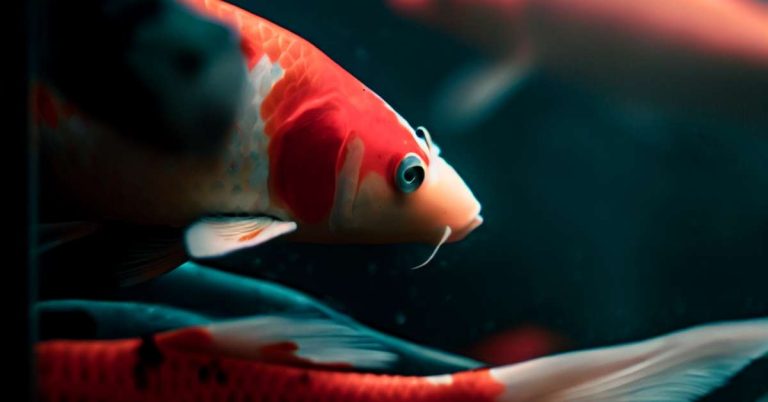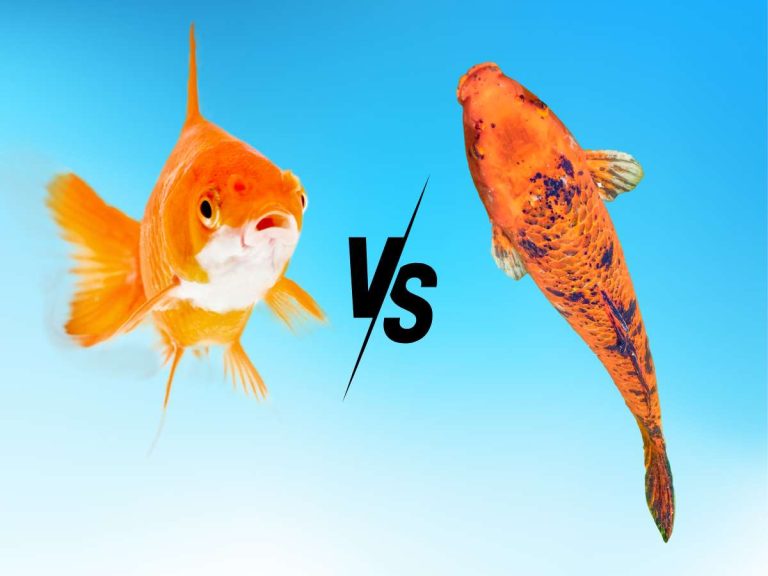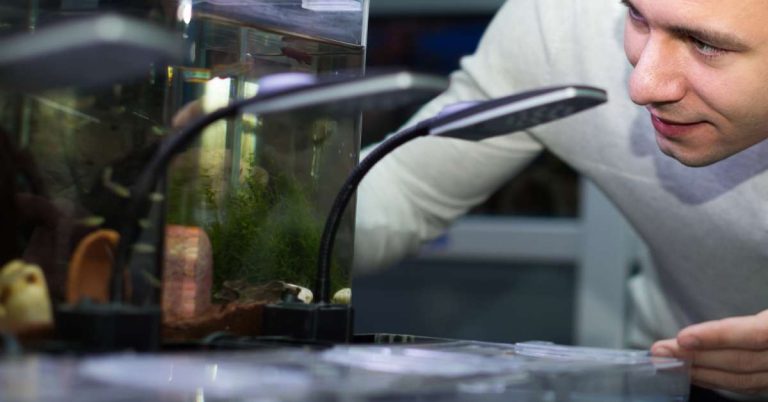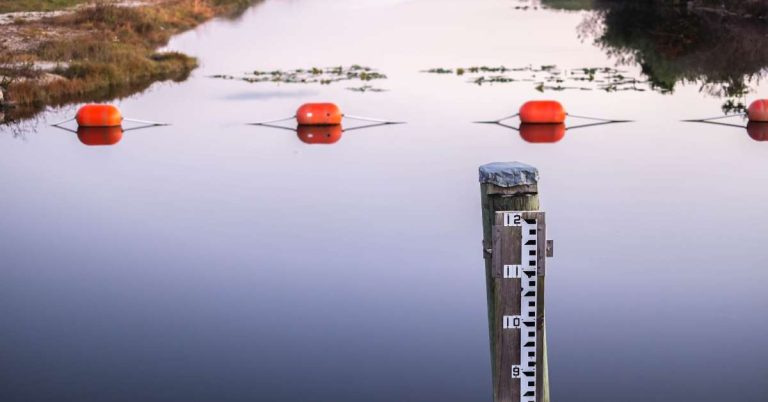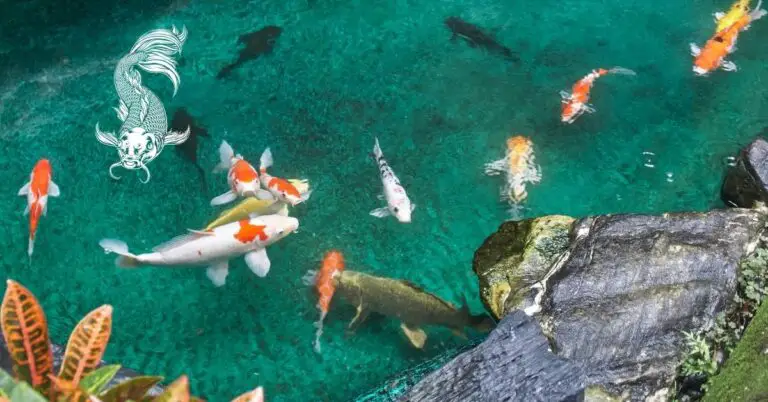Tancho Koi Fish Guide: Mastering Care, Selection, and Behavior
Tancho koi fish are a unique variety of koi with a distinct single red spot on their heads. This single red spot is what makes them stand out from other types of koi. The red spot can vary in size and shape, but it is always located on the head of the fish. For many, the red spot represents a symbol of good luck and prosperity, making tancho koi highly sought after by fish enthusiasts.
If you’re considering adding tancho koi fish to your pond or aquarium, you’ll need to understand their features and characteristics. The single red spot on their heads is not only visually appealing but also carries cultural significance. By learning more about tancho koi fish, you’ll gain a deeper appreciation for these fascinating creatures and be better equipped to care for them effectively.
Here’s what you need to know about this unique koi variety.
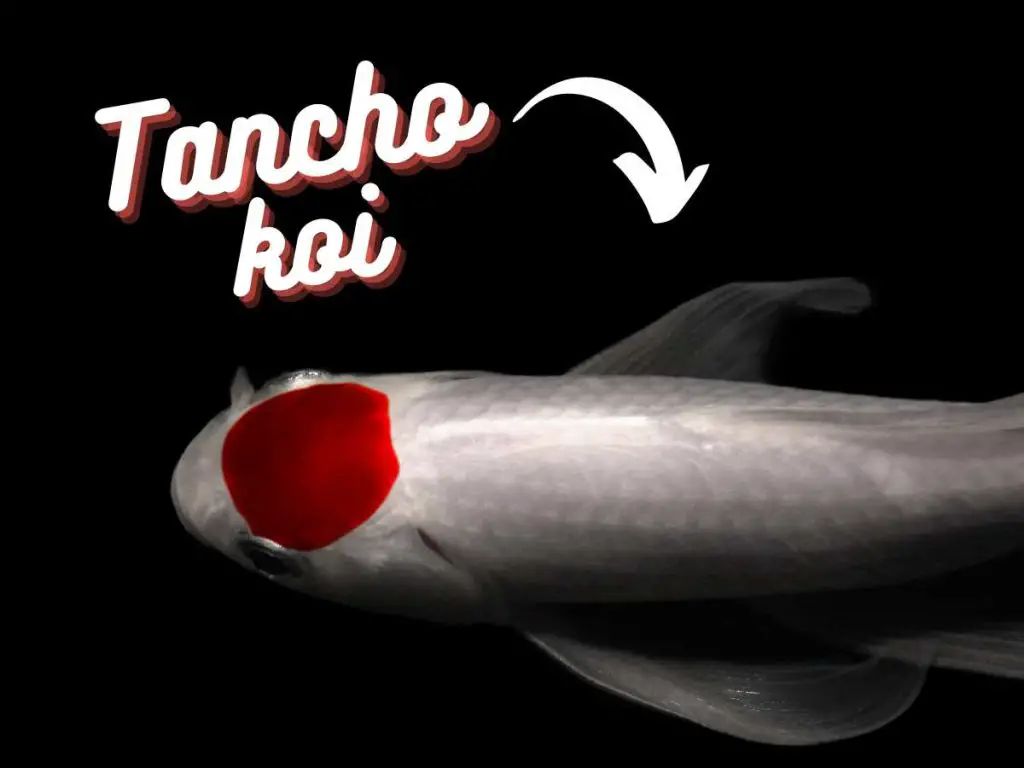
Tancho Koi Fish Features
Again, what makes these fish so special is the presence of a single red spot on their heads, which sets them apart from other koi varieties.
Indeed, while the physical characteristics of tancho koi fish can vary widely, but the most important and distinguishable trait is their red spot. This solitary burst of color can be found right in the center of their heads, creating an eye-catching focal point. It’s like they wear a vibrant crown that immediately captures your attention.
The formation of the red spot on tancho koi fish is a result of genetics and selective breeding. Breeders carefully select and breed koi with a genetic predisposition for the single red spot. This intentional breeding practice ensures that the offspring will also have this distinctive feature. As a result, tancho koi fish come in various patterns and variations of the red spot, adding to their uniqueness and beauty.
So what causes that unique spot in particular? It’s actually a manifestation of the pigment cells in that particular area. These cells produce a vibrant red coloration, resulting in the majestic mark on their heads.
What’s fascinating about tancho koi fish is that there are different variations and patterns for this distinctive red spot. Some may have a perfectly round spot in the center, while others might have a more elongated shape. There are even tancho koi fish with heart-shaped spots or irregularly shaped ones that lend even more uniqueness to each individual.
Reference Table: Different Types of Tancho Koi Fish
| Tancho Variety | Description |
|---|---|
| Round Spot Tancho | A tancho koi fish with a perfectly round red spot in the center of its head |
| Heart-Shaped Tancho | A tancho koi fish with a red spot shaped like a heart on its head |
| Irregular Spot Tancho | A tancho koi fish with an irregularly shaped red spot on its head, adding further uniqueness |
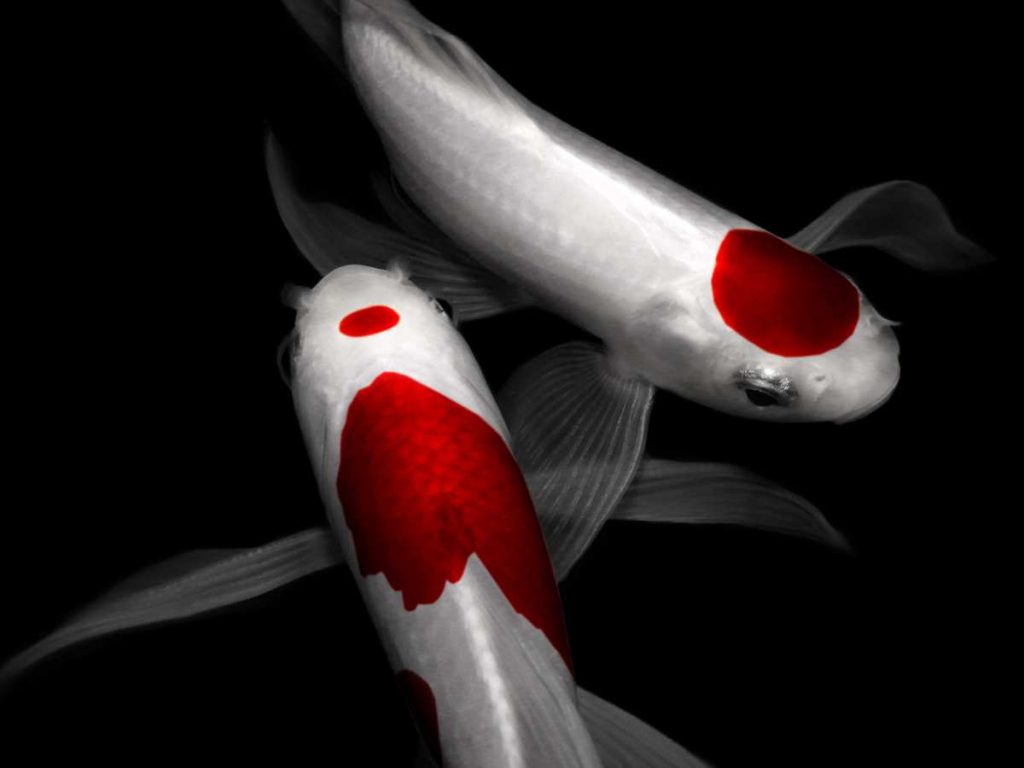
Tancho Koi Care Tips
Caring for tancho koi fish comes with a few important factors to consider. These graceful creatures require specific care requirements to thrive in their aquatic environments.
The first thing to keep in mind is the water quality and temperature of your tank or pond. Tancho koi fish prefer clean water with a temperature range of 68 to 77 degrees Fahrenheit. Maintaining the ideal water conditions is crucial for their overall well-being.
To ensure optimal water quality, regular testing is necessary. A good water test kit will help you monitor key parameters such as pH, ammonia, and nitrite levels. Regular water changes, filtration systems, and proper aeration are also essential in keeping the water clean, oxygenated, and free from harmful toxins.
Feeding guidelines and diet considerations
Feeding your tancho koi fish a balanced diet is vital for their growth and health. They are omnivorous (yes, koi can and do eat other fish) and enjoy a variety of foods, including high-quality pellets, flakes, and live or frozen treats like brine shrimp or bloodworms.
Overfeeding can lead to health issues and poor water quality. Feed your tancho koi fish small portions multiple times a day, allowing them to consume their food within a few minutes. This prevents waste buildup and ensures they get the nutrients they need without any negative effects on the water quality.
Tank or pond setup recommendations
Creating an appropriate environment for your tancho koi fish is essential for their well-being. For ponds, ensure that the size and depth are suitable for the number of fish you plan to keep. A larger pond offers more space and freedom for the fish to swim and grow.
For tanks, provide ample space, ideally 50 gallons of water or more per fish. A well-planted tank creates a natural habitat while also providing hiding spots for the koi. Make sure to include proper filtration systems to maintain water quality, and consider adding a heater if necessary to maintain the correct temperature range.
Lastly, make sure the tank or pond is free from any sharp objects or chemicals that could harm your tancho koi fish. Regular maintenance and cleaning are essential to keep their environment safe and comfortable.
Identifying High-Quality Tancho Koi
If you’re trying to buy the perfect tancho koi fish, you need to know what qualities to look for (especially when buying koi online). By understanding how to evaluate the quality and potential of tancho koi fish, you’ll be able to choose the best specimens for your collection or breeding program.
Body shape and proportion
The body shape and proportion of a tancho koi can tell you a lot about its overall health and potential. Look for fish with a solid body structure and a proportional head size.
A well-developed body with smooth curves indicates good growth potential and strength. Avoid fish with deformities or unusually elongated bodies.
Finnage characteristics
The finnage of a tancho koi is another important aspect to consider when evaluating its quality. Ideally, the fins should be long, well-formed, and symmetrical. Check for fins that are free from any damage or tears, as this could indicate poor health or previous injuries.
Skin quality and coloration
The skin quality and coloration of a tancho koi fish are crucial factors that contribute to its overall beauty and value. Look for fish with vibrant and evenly distributed colors. The white base color should be clean and free from blemishes or any discoloration. The red spot on the head should be prominent, well-defined, and ideally rounded in shape.
Pro tip: When evaluating skin quality, pay attention to the texture as well. A smooth and glossy skin surface indicates good health and high-quality genetics.
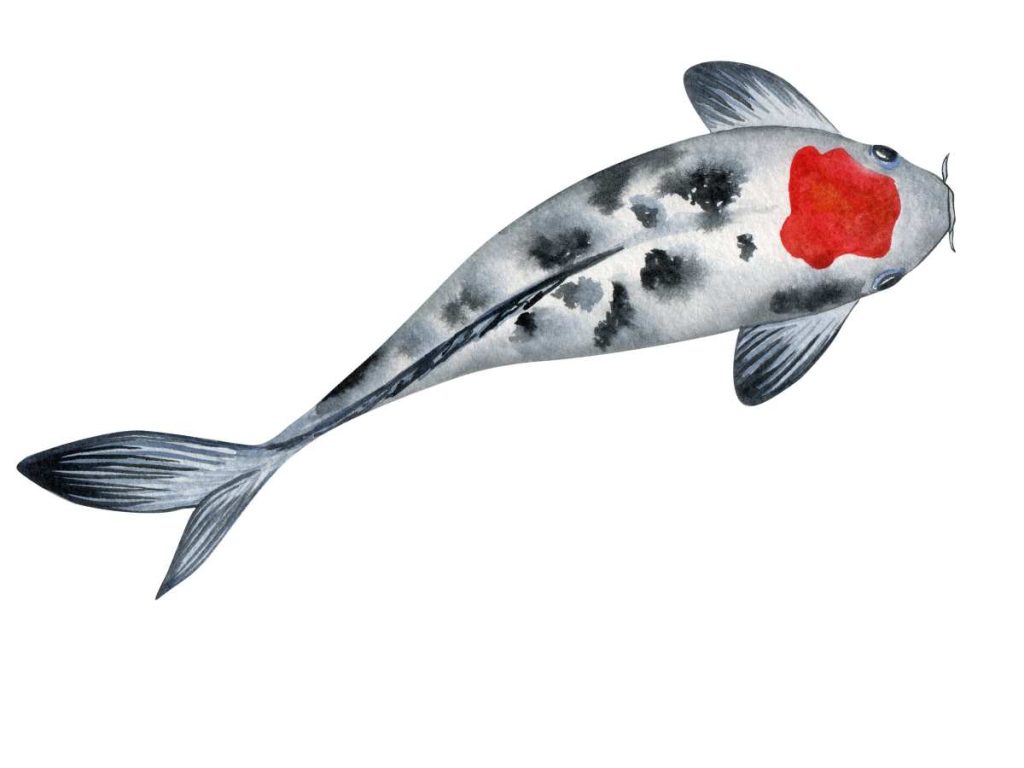
Choosing Tancho Koi for Pond or Aquarium
When choosing tancho koi for your pond or aquarium, there are a few things to keep in mind.
First, you need to think about the size of your aquatic setup. Tancho koi are active fish that require ample space to swim and thrive. A pond is the ideal habitat for these majestic creatures, providing them with the freedom to explore and grow. For ponds, it’s generally recommended to have at least 500 gallons of water per tancho koi.
If you’re limited on space and opt for an aquarium instead, make sure it’s large enough to accommodate the number of tancho koi you plan to keep. The rule of thumb is to provide at least 10 gallons of water per inch of fish.
Pond Requirements and Size Recommendations:
In order to create a suitable pond environment for your tancho koi, consider factors such as depth, filtration, and vegetation. A depth of at least three feet is necessary to protect the fish from extreme temperature fluctuations and predators. Additionally, a good filtration system is crucial to maintain clean and healthy water conditions.
Lastly, incorporating aquatic plants not only adds beauty to the pond but also provides natural hiding spots and additional oxygenation for the fish.
Aquarium Setup Guidelines and Design Options:
If you’re opting for an aquarium setup, there are a few key considerations to take into account. First, choose an appropriately sized tank based on the number of tancho koi you intend to keep. Consider investing in a high-quality filtration system capable of handling the koi’s waste.
It’s also important to mimic natural environments by including plenty of aquatic plants and ornaments for cover. This will help reduce stress and create a visually appealing habitat for your koi.
Compatible Tankmates and Community Guidelines:
While tancho koi can be kept with other fish, it’s important to select compatible tankmates to ensure a peaceful and harmonious environment. Avoid keeping them with aggressive or nippy fish that may damage their fins or harass them.
Good tankmates for tancho koi include other koi varieties, goldfish, and peaceful scavengers such as catfish or loaches.
Be sure to research the species you plan to keep together to ensure they have similar temperature and water quality requirements.
Tips for Creating an Optimal Habitat:
Creating an optimal habitat for your tancho koi is vital for their overall health and well-being.
Consider including a variety of aquatic plants that provide shade and cover, such as water lilies or floating plants like duckweed or water hyacinth. These not only provide shelter but also help to maintain a balanced ecosystem by absorbing excess nutrients.
Additionally, investing in a high-quality filtration system will help keep the water clear and free from harmful toxins.
Regular water testing and maintenance routines, such as partial water changes, will also contribute to a healthy environment for your tancho koi.
Note: Creating this type of optimal habitat will benefit all your koi, from your Utsurimono to your Bekko and beyond.
VI. Understanding Tancho Koi Behavior
Tancho koi fish are known for their inquisitive and social nature. They are curious creatures that love to explore their surroundings, interacting with other fish and even with us humans. You’ll often find them swimming gracefully in groups, creating a mesmerizing display of color and movement.
These beautiful fish have a preference for calm water and are attentive to changes in their environment. If you’re thinking about introducing new plants or objects into their habitat, give them some time to acclimate and adjust peacefully.
Environmental factors and breeding practices can significantly impact the behavior of tancho koi fish. For instance, if they’re raised in a pond with little stimulation, they might become shy or secretive. On the other hand, a pond enriched with hiding spots and plants can encourage their natural exploratory behaviors.
In terms of koi breeding, careful selection and intentional pairing can shape the temperament of tancho koi offspring. Experienced breeders often focus on maintaining desirable traits such as friendliness, curiosity, and docility.
Interacting with Tancho Koi Fish
Be patient when interacting with your new tancho. Tancho koi fish are intelligent and can recognize familiar faces over time. By spending regular quality time observing them, they will become more comfortable with your presence.
Teaching them simple commands like “Come” can be a rewarding experience for both you and your tancho koi fish. Using food as a positive reinforcement tool, they can quickly associate the command with a tasty treat.
Remember to never force interactions or disturb them during their resting periods. Tancho koi fish, like all living beings, deserve their personal space and downtime to recharge.
Final Thoughts
Remember: Consistency and attention to detail are key when it comes to caring for tancho koi fish. By providing them with a suitable environment and carefully monitoring their well-being, you’ll be rewarded with happy, healthy, and beautiful tancho koi swimming gracefully in your pond or aquarium.
So, there you have it – everything you need to know about tancho koi fish! We’ve covered their unique features, care tips, how to identify high-quality specimens, choosing the right environment for them, their behavior, and their specific requirements.
Key Takeaways
- Tancho koi fish have a single red spot on their heads.
- The red spot is formed naturally and can vary in size and pattern.
- Tancho koi fish require specific care in terms of water quality, temperature, and feeding.
- Common health issues can be prevented or treated with proper care.
- When selecting tancho koi fish, consider body shape, finnage characteristics, and skin quality.
- Ponds or aquariums should meet the specific requirements of tancho koi fish.
- Be mindful of compatible tankmates and design an optimal habitat for them.
- Tancho koi fish behavior can be influenced by environmental factors and breeding practices.
- Follow their food and feeding guidelines, maintain proper water parameters, and provide suitable tank or pond sizes.
Now armed with this knowledge, you’re well-equipped to keep and appreciate tancho koi fish in your aquatic setup. Whether you’re a seasoned pond enthusiast or a beginner aquarium hobbyist, you’re sure to love them.
Related Questions
Can tancho koi fish live with other species of fish?
Yes, tancho koi fish can coexist with other species of fish in a pond or aquarium. However, it is important to choose compatible tankmates that have similar water parameter requirements and non-aggressive behavior. Some suitable tankmates for tancho koi fish include goldfish, shubunkin, and other koi varieties.
How long do tancho koi fish live?
Tancho koi fish have the potential to live for several decades if they are provided with proper care and a suitable environment. With optimal conditions and a balanced diet, tancho koi fish can generally live for 20 to 30 years or even longer. Good water quality, regular maintenance, and proper nutrition are key factors in ensuring their longevity.


